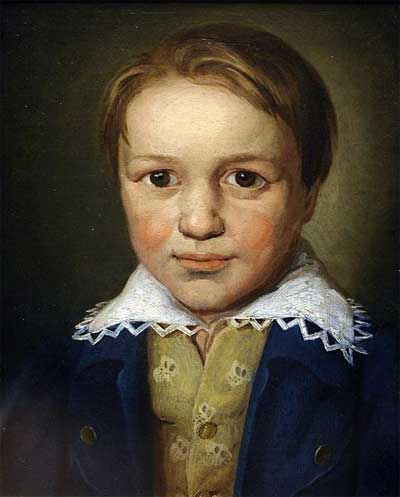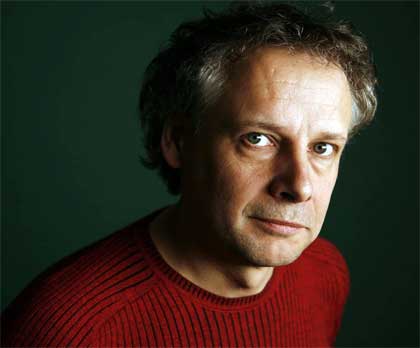Concert
The Complete Cello-Piano Sonatas by Ludwig Van Beethoven
Pieter Wispelwey, cello
Lois Shapiro, piano
Granoff Music Center
Tufts University
Medford, MA
Sonata No. 2 in G Minor, Op. 5, No. 2 (1796)
Sonata No. 4 in C Major, Op. 102, No. 1 (1815)
Sonata No. 5 in D Major, Op. 102, No. 2 (1815)
Sonata No. 3 in A Major, Op. 69 (1808)

I could not quite believe it when I saw the stage podium set for a cellist, but without a music stand. Who would dare to play all five Beethoven sonatas without the sheet music?
Pieter Wispelwey did, and he did a fine job, adeptly accompanied on the piano by Lois Shapiro.
The program left the most majestic of the sonatas, No. 3 in A major, for the end. Other than that change, they were played in sequence.

The playing matured throughout the program, starting in a way that seemed highly competent yet a bit jagged, but ending with a marked subtlety and nuanced intensity.
In the first sonata, Shapiro’s very light and delicate touch in the Rondo was very apparent. Wispelwey played with staccato emphasis in spots, giving a dramatic turn of phrase, but seeming, in places, to be a little too gruff for the context. From the beginning, however, especially during the fast passages in the Rondo, one could see Wispelwey’s amazing technique. At the end of the sonata, there was a beautifully executed rallentando that preceded the dramatic finale.
Again, in the second sonata, in the introductory Adagio, the piano entered so delicately it seemed to emerge from almost nowhere. I noted, at the outset here, as well, some gruffness in Wispelwey’s attacks, and felt like he did not quite manage to sit down into the music until the second movement, when he gave beautiful shaping to the haunting phrases near the end. In the Rondo, Wispelwey exhibited great bow work in the fast passages, but also great subtlety in the part that crept towards the recapitulation. Floating piano runs were everywhere, exhibiting Shapiro’s general adeptness. Though I hoped to get a bit more sense of the magical mystery out of the development passages in the minor key, the ferociously fast and aggressive ending provided compensatory excitement.

In the fourth sonata and the first part of the fifth sonata, I felt quite a bit as I did in the earlier pieces – that Wispelwey’s mode of emphasis was a bit too jarring. And I wanted to hear a little more lyricism rather than punctuated drama in the passages that begged for it.
But, in the second movement of the fifth sonata, something in Wispelwey’s playing appeared to settle down and really breathe. There was a beautifully plaintive exchange at the opening of the movement and a playfully whimsical echoing between cello and piano throughout, with delicately sculpted and measured transitions. In the last movement, a ferociously complicated fugal scherzo, was wonderfully articulated and carefully done, showing off the woven development in a refined and delicate manner. And the way that Wispelwey almost half-played ghostly notes as an introduction to the final bold section was extremely effective.
Wispelwey really came into his own in the final sonata, No. 3 in A major. This sonata is generally considered the greatest of the five, and Wispelwey and Shapiro played it with grandeur, grace and subtelty. Somehow, it was as though the bottle of wine had been opened, aired and now came to full flavor.
Whatever, before, had felt a bit gruff and awkward, now felt perfectly homogenized, with perfectly integrated tones. Gossamer runs rode upon deep, rich foundations, and darkness and mystery abounded in the minor-key recapitulation. Still, Wispelwey’s miraculous left hand and bow arm were still most evident in the intensely fast chordal passages, and Shapiro’s crisp attacks and lilting runs were evident throughout, building to a rich, clarion end at the close of the first movement.
In the Scherzo, Wispelwey’s degree of emphasis felt just right, marking the weave in the syncopated interchange with the piano. In the finale, there was wonderful shaping in the fast and light cello runs, and Shapiro kept right alongside. And then, there was wonderful sostenuto in the cello, anticipating the grand finale with its incredible runs executed energetically and flawlessly. This was a fabulously exuberant end to one of the great pieces in the cello-piano literature, and a fabulous culmination for this most ambitious and challenging program.
– BADMan
Leave a Reply